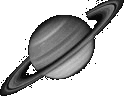
|
| Search: |
|
|
|

|
The positions and orbits of the Earth around the Sun and of the Moon around the Earth can be visualised and roughly be understood watching them from a "fixed" point of view and drawing them into one plane. In this simple model the regions of day and night and the phases of the moon result from the illumination changing as Earth and Moon pursue their orbits. |
|

|
But what do you really observe at a certain location and at a certain time ? The positions of Sun and Moon must be computed according to date,
time and the observer's location in his horizontal system with the
coordinates "elevation (altitude)" and "azimuth". |

|
On the word map, the the Sun and the Moon are displayed by their Geographical Position (GP). An observer located there will see the Sun or Moon directly in the vertical, above his head.
The coordinates of the Geographical Position (latitude and longitude) are the same as the declination and Greenwich hour angle (GHA). |
![]()
| Home AstroGuide Forums Articles Classifieds News |
|
||
 Astronomy Net |
|||
|
. . . window
on the astronomy world . . .
|
|
||
|
"dbHTML," "AstroGuide," "ASTRONOMY.NET" & "VA.NET" are trademarks of Virginia Net Corporation |

